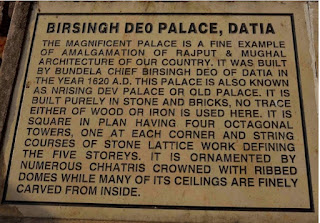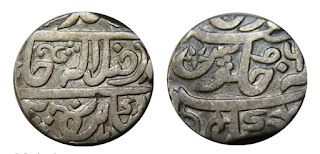One of the most famous coins of all times is the EID MAR (15th March) denarius issued by Marcus Junius Brutus in 43/42 BC. This coin is the only Roman coin to mention a specific date, the only Roman coin to openly celebrate a murder, and one of the very few coins mentioned by a classical author, historian Dio Cassius who wrote in his account of the Roman civil wars of 49-31 BC, ''Brutus stamped upon the coins which were being minted his own likeness and a cap and two daggers, indicating by this and by the inscription that he and Cassius had liberated the fatherland''.
EID MAR (Ides of March is the 74th day in Roman calendar, corresponding to 15 March) denarius, issued by Marcus Brutus
When Julius Caesar crossed the Rubicon, he threw Rome into more than three years of civil war, eliminating his opponents along the way. In 49 BC, many leading citizens, including some sixty Roman Senators, had come to see Caesar as a power-grabber who wanted to make himself king. This state of affairs was an unacceptable situation for men like Brutus, who wished to retain their Republic.
Gaius Julius Caesar
Brutus, who was a trusted friend of Caesar's, conspired with a group of his fellow senators to assassinate Caesar. This group of conspirators called themselves the Liberators. They believed that they would liberate the Roman Republic from the threat of tyranny by a monarch if they could remove Julius Caesar from power.
Marble bust, Brutus, at the Palazzo Massimo alle Terme in National Museum of Rome
In 44 BC, on the 15th day of March, a day know in the Roman calendar as the ''Ides of March'', Brutus and his co-conspirators struck. Using daggers they had hidden beneath their tunics, they flew at Caesar in a hail of knife blows, stabbing him at least 30 times. When Caesar realized his good friend Brutus was among his attackers, he asked, ''Et tu, Brute''? (you, too, Brutus''?). As Caesar lay dead on the steps of the portico, Brutus jubilantly shouted, ''People of Rome, we are once again free''.
Unfortunately for Brutus, the general populace was very fond of Julius Caesar. Marcus Antonius (Mark Antony) took advantage of the breach in leadership and loudly condemned Brutus' action. Brutus was forced to flee Rome with his soldiers. After several military encounters, Brutus's forces fell to Mark Antony and Octavian (who later became Caesar Augustus) in 42 BC. Brutus committed suicide before he could be taken prisoner using the same dagger he had plunged into Caesar.
Ancient Roman military commanders like Brutus had to pay their soldiers, and they generally did so with silver coins called denarius. They frequently minted their own coinage. Brutus issued a series of gold and silver coins commemorating the assassination of Julius Caesar.
Denarius, Brutus, 43-42 BC, silver, weight 3.72 gm, diameter 18 mm
Two Daggers and a Liberty Cap, and the Portrait of a king. Brutus issued the EID MAR silver denarius to remind his soldiers that they fought. The reverse of the coin bears the images of two daggers, between which is a liberty cap, an ancient symbol of freedom. The inscription reads EID MAR, meaning ''Eidibus Martiis'', or the ''Ideas of March''. The obverse of the coin features a portrait of Marcus Brutus. The inscription reads BRVT IMP L PLAET CEST, which means Brutus, Imperator, Lucius Plaetorius Cestianus, Lucius Plaetorius Cestianus was the moneyer who managed the mint workers
Aureus, Brutus, 42 BC, gold, weight 8.06 gm, diameter 19mm
In Harlan J Berk's 100 greatest Ancient Coins, the EID MAR denarius is listed in the number one slot. About 80 specimens of this remarkable coin are estimated to exist in silver, with two known in gold. The relative rarity of this coin is because these were deliberately recalled and melted by Marc Antony and Octavian. Silver coins in extremely fine condition have sold at auction for around $120,000. Lower grade silver coins are occasionally seen in the market for around $50,000 making it an extremely expensive option to add in one's collection.
A gold EID MAR, aureus was sold for $4,188,393 US on Oct,29, 2020 setting a record price for any ancient coin. This particular coin is the only publicly available example of this. The other examples are displayed at the British Museum and in the permanent collection of the Deutsche Bundesbank, the central bank of the Federal Republic of Germany.
EID MAR Denarius
Assassination of Julius Caesar
Marcus Junius Brutus




















































